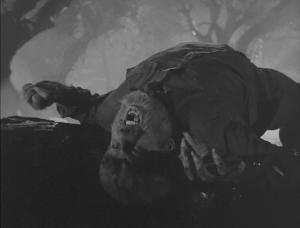Human beings have always had a fascination with the werewolf. They have been the subject of literature, television shows, and movies. They have been romanticized, criticized, vilified, and pitied for hundreds of years. But do they really exist? Most of us would automatically answer “of course not. They are fictional characters meant to entertain and terrorize.” But are we absolutely certain?
There are still cult groups today that believe in the existence of werewolves. They have their own organization, their own website, and a substantial fan base. If werewolves don’t exist, why are they so certain that they do? Let’s examine the myth and legend that is attributed to the werewolf.
No one really knows for certain where the legend of the werewolf began. History indicates that stories of lycanthropes have existed as far back as time itself. While werewolves are typically associated with European countries, they have roots in the culture of other countries as well. China, Haiti, Argentina, and even Native America have spun tales of these shape-shifting creatures.
Europe, however, does seem to have cornered the market on the sheer number of stories about these half-human, half-animal beings. Although Romania tends to be the accepting birthplace of these creatures, in truth they also hold a place in the cultures of the France, Spain, Bulgaria, Russia, Poland, Scotland, England, Germany, Sweden, Portugal, Italy and many other countries.
Most people don’t realize that Greek mythology is ripe with legend of the werewolf. As one story goes, the Greek gods turned one of their own into a werewolf when he broke one of their highest commandments; that of not eating human flesh. Cannibalism was considered an unforgivable taboo. Therefore, the gods turned the god into an animal that could acceptably take part in the practice.
Roman mythology has a similar story about a cursed man who was turned into a wolf for nine years. If, after that time, he had still not tasted human flesh, he would be allowed to return to his family.
Still another story unveiled the fate of an Armenian woman. As the legend goes, a spirit came forth to punish her for her terrible sins by forcing her to put on a wolf skin. Once she did she immediately began to crave human flesh. Unable to control herself, she attacked her own children and the children of her relatives, eating them one by one. That done, she moved on to the children of others.
Some believe that this tale might be the origin of the concept that werewolves could act as normal human beings during the day, changing to the wolf only at night, as was the curse bestowed upon the Armenian woman. Others also credit this story with a tie to “Little Red Riding Hood” and the wolf’s nagging need to consume young children.
Norway’s most ferocious fighters honored the wolf by dressing in their skins as a means to help them channel the wolf for their quests. They believed that the animals helped them become stronger in battle and enabled them to defeat their enemies. They also believed that the animal spirits made them immune to pain and nearly invincible. It is here, perhaps, that the belief in the immortality of werewolves began.
In the 1500’s France held a rash of trials with individuals accused of lycanthropy. In reality, it appears that the families charged in these cases were merely guilty of cannibalism and an insane belief in their abilities to shift shapes to become wolves. Only one French case brought strong evidence that a wolf might have been involved in the murders. However, there turned out to be little evidence of actual human involvement with regard to that instance.
Although much of the history of 17th Century England is littered with what were considered documented cases of lycanthropy, eventually both the church and the courts agreed that people claiming the ability were merely suffering from an irrational delusion. This is interesting in light of the fact that both the groups continued to explore cases of witchcraft during the same time period. The witch hunts weren’t abandoned until much later. Some of the supposed witches were, in fact, blamed for cursing victims into becoming werewolves.
In later years, much of Europe came to believe that a fungus that grew on the rye grains used to make bread caused cases involving werewolves and even some of those involving witchcraft. Ergot poisoning can induce hallucinations, cause hysteria, and promote paranoia. In extreme instances, cases resulted in convulsions, foaming at the mouth, and even death.
While there is obviously some scientific reasoning to this belief, it doesn’t account for similar cases of the practices of witchcraft and lycanthropy in other countries throughout the world that didn’t have access to or use the types of grains that bore the fungus in question.
Those accused of witchcraft were not the only ones credited with the ability to turn people into werewolves. That ability was also attributed to Christian saints. The beloved St. Patrick of Ireland supposedly turned a Welsh king into a wolf. In Russia, men and women struck with the disease were believed to have been victims of the devil himself. Other countries, like Bulgaria and Lithuania, also practiced this belief.
Although a lot of werewolf cases took place between the 15th and 17th centuries, there have been cases reported well into the 20th century. In the 1950’s, there was a case in Texas that seemed to bear out the possibility of werewolves. Late in the 1990’s, India also experienced a string of wolf attacks. Many locals insisted that those involved weren’t ordinary wolves, but werewolves.
There are nearly as many legends about how a person becomes a werewolf as there are stories about the animals themselves. The most famous legend, of course, indicates that the person must be bitten or scratched by the werewolf. Others indicate that it takes much less exposure. They say that even drinking water from the footprint of the wolf will ensure the “disease” to be carried into the drinker’s system.
Still others subscribe to a theory that it takes nothing more than donning the skin of the beast or rubbing the secretion of the animal onto human skin. This was a popular belief among many tribes of Native Americans. However, a few believe heredity plays a role in those whom will be cursed. For example, the cultures of Portugal and Brazil believe that only the seventh son of a seventh son can make the transition.
Obviously, throughout the years, people needed a way to determine who might be the wolf in disguise. A lot of different attributes and symbols were believed to help that process. The most common belief, of course, involved the brand of the pentagram somewhere on the cursed person’s body. Some believed that the “brand” was on the palm of the hand, but others insist that it could also be hidden from sight, like underneath the hairline.
Other ways of identifying the wolf were more ambiguous and dealt more with the person’s individual issues than any kind of reasonable proof. Some believed that the wolf always cursed those with red hair. Others believed that only people born on December 25th were cursed with the disease. Still others accused anyone who liked rare meat.
There are also a number of ways that will supposedly remove the werewolf curse. The simplest method involves removal of the animal skin (for those who believe that donning the skin causes the transition). Other cures involve holy artifacts such as crosses or stars of David or specific rituals like drawing the blood of the diseased creature. Some European countries say that all that is needed is to make the wolf reveal his (or her) human form.
In situations where curing the disease was deemed impossible, the obvious alternative was the death. Modern beliefs, as shown in literature and film, generally involve the use of silver because of the metal’s believed “purifying nature.” Most agree that shooting the wolf with a silver bullet will definitely do the job. Others think that killing the animal with a silver knife, sword, or other blade will also work. Many believe, however, that silver isn’t necessary at all; that all it takes is a mortal wound in the wolf’s heart or brain.
Although many of these myths and legends are interesting, there is no evidence to prove that werewolves do or have ever really existed. Modern science believes that the stories may have come about as a result of the physical or mental characteristics of humans under the influence of real-life illnesses that made them look or act like wolves.
One such physical condition is called hypertrichosis. This disease causes excessive hair growth over the entire human body. Some of the people suffering from this disease have a strong resemblance to the original werewolf creatues of early film. These individuals often became carnival or side show acts, thereby inadvertantly continuing the werewolf legend.
A mental condition called porphyria may be another cause for individuals who believe they suffer from lycanthropy. Porphyria is an enzyme disorder that, much like ergot poisoning, causes hallucinations and paranoia. And there is the mental disorder called lycanthropy itself. It causes humans to buy into their delusional belief.
I don’t believe in werewolves myself, although I will admit that I enjoy movies and shows about them. I don’t actually know anyone who does actually believe in this particular myth. What interests me is the continuance of the legend in modern times. Why do some still continue to hold on to this belief? I can’t answer that myself, but I invite your ideas and beliefs. If you want to take a moment below to comment on why you think people hold on to this myth, I’m sure the readers will enjoy your thoughts. I know that I will.





